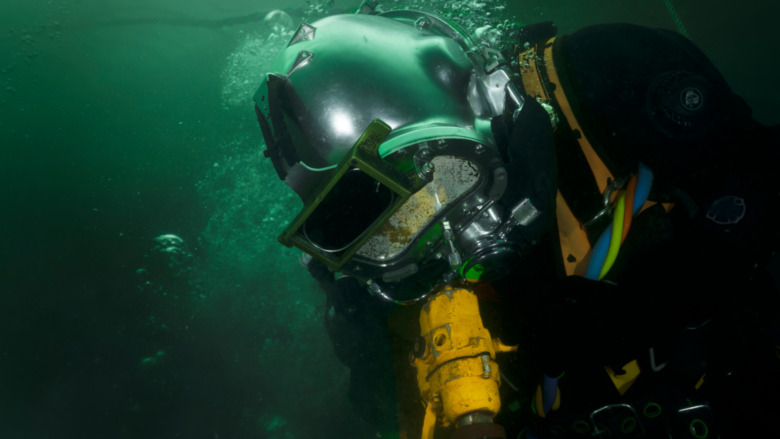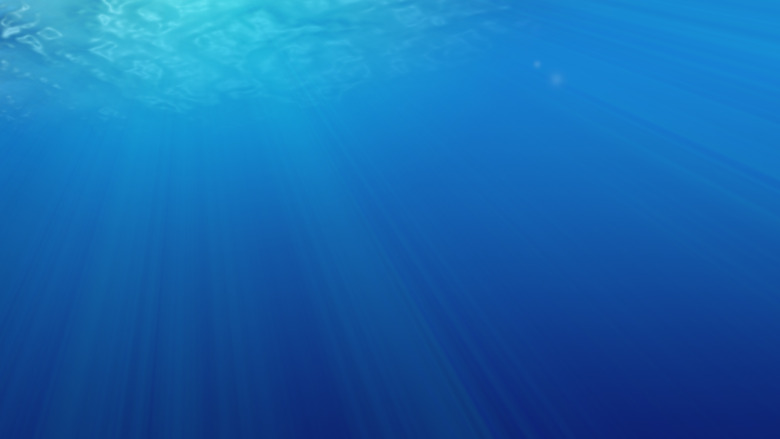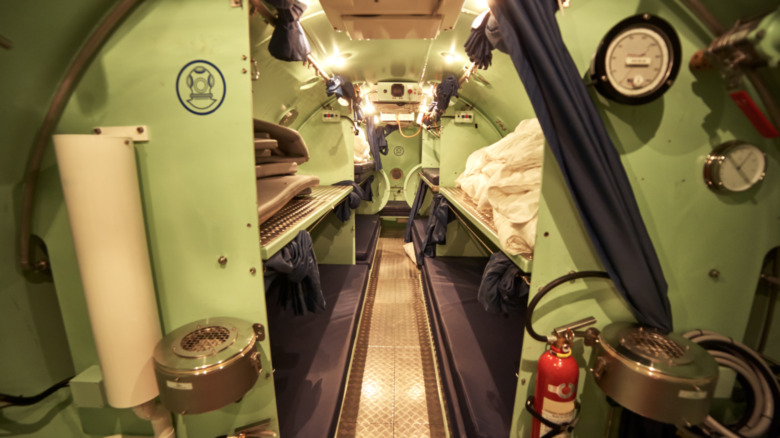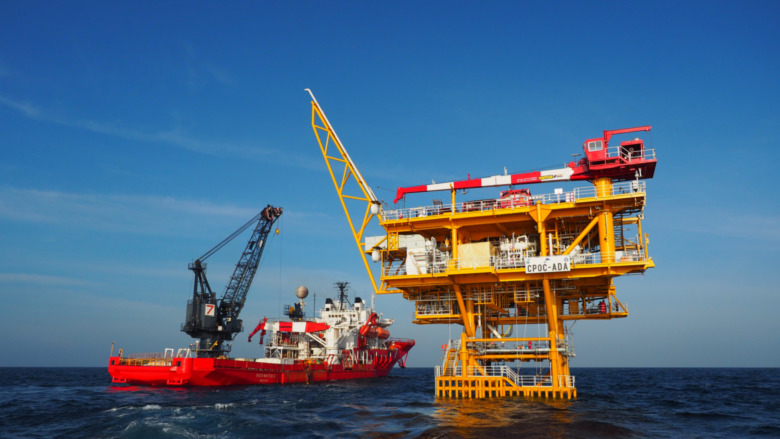Saturation Diving: The World's Most Isolated And Lethal Job
For those considering a career change, here are some job duties of saturation divers, as explained by Oceaneering: "Salvage wrecked ships and/or their cargo, using pneumatic power velocity and hydraulic tools, and explosive charges when necessary"; "Cut and weld steel, using underwater welding equipment, jigs, and supports"; "Inspect and test ... underwater pipelines, cables, and sewers, using closed-circuit television, still photography, and testing equipment."
Kind of cool? Certainly a lot of skills that outstrip, say, typing. But here's the thing: you've got to stay underwater the entire time, for a month, like an astronaut of the ocean, at depths of up to 1,000 feet. Ok, 28 days "seal to seal," per Divers Alert Network (DAN). One day to descend, 19 days of work, and eight days to slowly ascend so you don't get "the bends" (yes, like that Radiohead album, but more on that later). And while down there, you've got to endure the shrinkage of cartilaginous tissues, living quarters the size of an "Applebee's booth" (per Atlas Obscura), and follow protocol to a T or else you'll literally explode — like what happened at the Byford Dolphin rig in 1983. In that incident, says Hackaday, an incorrectly placed clamp and subsequent rapid depressurization of a diving bell caused five men to erupt on the spot and wind up in pieces 30 feet away.
But if you survive, you get five to seven weeks off before your next trip, per The Guardian. And up to $1,400 a day. Hoorah!
Tethered to rigs in the absolute darkness of the void
Saturation diving came into existence only as recently as 1964, when a combination of technology, science, and the demands of the oil and gas industry created one of the world's riskiest, and potentially lethal, professions. The basic idea is simple: it's more cost effective to keep folks underwater for longer periods of time rather than take them back up and down.
Saturation divers (or SAT divers, as the Divers Institute of Technology calls them) live in hyperbaric, pressurized chambers and typically work shifts of up to eight hours on crews of up to 12 people. Work can continue 24/7 and, this way, the construction of 12 miles or more of underwater pipes welded into place using 200-pound bolts can continue unabated, as one diver says in The Guardian. And before you wonder: this is still too deft of a job, and requires too much judgment, to be done by robots. It's all done by human hands.
All of this happens "in the absolute darkness of the void," as one former saturation diver says on Reddit, with lamp light reaching 10 feet and no farther. Every single action taken is mandated by strict regulations, and requires absolute patience and focus at all times, lest SAT divers make a mistake that could result in their death. They always remain attached by cords to their rigs, and otherwise face nothing but the haze of the deep and the silence of their minds.
Under the relentless pressure of psychological and physical challenges
Physical fitness is a must for SAT divers because of the demands of hefting and welding giant pieces of metal underwater. The aforementioned diver mentioned in the The Guardian does cardio and weights four times a day when he's not "on a dive" (in a suit in the ocean), and otherwise basically just sleeps because he's exhausted. To even get employed, divers have to pass rigorous training in a highly competitive field.
SAT divers also face a litany of psychological and physical health concerns: extreme isolation and claustrophobia, sunlight and vitamin deprivation, bacteria and viruses circulating through equipment, brain damage from improper gas mixtures, hypothermia, you name it. In fact, all divers are also certified diver medical technicians (DMTs), as DAN says, trained to use IVs, stitch wounds, and deal with diver-specific illnesses.
Air pressure must be maintained at all times, equal to the pressure of the water above, and up to 25 times the surface pressure, per Hodinkee. SAT divers breathe a mixture of helium and oxygen called "heliox" to offset the extra pressure, but heliox can cause high-pressure nervous syndrome, so the mixture contains extra nitrogen. This causes divers' voices to get messed up (helium balloons, right?), which means that they have to use "voice descramblers" to understand each other. But because helium is poor at containing heat, their living quarters have to be kept at 85-93 degrees Fahrenheit, and their diving suits lined with hot water tubes.
Saturated with nobles gases and supported by a surface team
Saturation diving gets its name from the underwater "saturation" of blood vessels and bodily tissues by noble (inert, fully-valenced) gases. Usually, these gases recirculate into the atmosphere when we exhale. If divers rise too fast, these gases slip from the body too quickly, and divers can get decompression sickness, informally known as "the bends" (think "opening a can of soda" here). The symptoms, as Harvard Medical School says, include disoriented thinking, joint pain, numbness, weakness, rashes, and, of course, death — so divers take an excruciatingly slow trip of one day per 100 feet to the surface, as DAN tells us.
Of course, even saturation divers, isolated and self-sufficient as they are, are only one part of a large crew of people above ground and on oceanic rigs who support them. As Atlas Obscura says, there are subsea managers, dive supervisors, life support supervisors, life support technicians, and assistant life support technicians. And of course, there are chefs. Every day, every meal, SAT divers make their menu selections, and down into the deep sinks their meal. They use disposable containers and, to offset the typical loss of taste, often request hot sauce (but never completely close the bottle unless they want it to explode or implode). As for toilets and sinks? One each, which helps SAT divers to learn to "s*** on command," as diver Steve Tweddle says. So yeah, might be best for most of us to stick to snorkeling.



